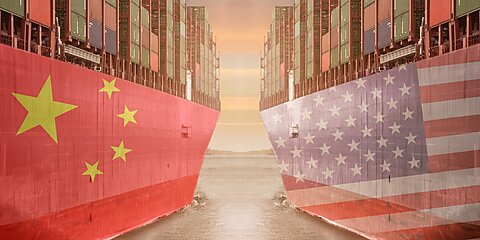Clark Packard and Alfredo Carrillo Obregon
For nearly seventy‐five years, the United States was the leading proponent of rules‐based international trade and investment. While it once leveraged its dominant position in the global economy to create durable institutions and agreements like the General Agreement on Tariffs and Trade (GATT) and its successor the World Trade Organization, the US is now a laggard.
As Clark Packard noted last year, it has now been more than a decade since the United States entered into a new free trade agreement (FTA) with a new partner. Over time, a non‐existent trade agenda will lead to a stagnating economy and a loss of influence around the world as the rest of the world moves forward with further economic integration.
As Washington consciously retreats from global international economic leadership, China is filling the void, most notably in the Asia‐Pacific region but also, increasingly, elsewhere.
While the Obama administration showed no real interest in pursuing trade liberalization in its first term, it was able to complete negotiations and push for congressional approval of the Trans‐Pacific Partnership, a promising pact with eleven allied countries in the Pacific Rim, during the waning days of its second term.
Subsequently renamed the Comprehensive and Progressive Trans‐Pacific Partnership (CPTPP), the framework moved forward without the United States after the Trump administration’s ill‐advised decision to withdraw from the pact. The agreement was conceived as a tool to promote US economic interests, but also probably more importantly, its geopolitical interests. Indeed, foreign policy benefits drove the agreement. At its core, CPTPP was designed to offset Beijing’s growing influence and economic gravitational pull in the Asia‐Pacific region by providing an alternative market to China. The agreement contained high‐quality rules constructed to set standards in a vital and dynamic part of the world. Now in place, Beijing (and others) has applied to join the very agreement conceived as a counterweight to China.
On top of that, the Beijing‐led Regional Comprehensive Economic Partnership (RCEP), which includes a number of prominent Asian powers, has gone into effect. Likewise, policymakers in Washington have let the Generalized System of Preferences (GSP) lapse.
GSP cuts tariffs on certain products coming to the United States from about 120 developing countries, including a number of Chinese competitors in Asia. After the Trump administration’s tariffs, many companies relocated manufacturing out of China and into GSP‐beneficiary countries to take advantage of the tariff disparity. Now that GSP has lapsed and tariffs have been re‐imposed on products from GSP countries, some of those very countries have moved production back to China.
In other words, myopic thinking from Washington has effectively ceded the economic playing field in Asia to China.
It’s not just Asia where an atrophying trade agenda is causing a loss of influence and prestige as Beijing fills the vacuum. As The Wall Street Journal detailed last week, Uruguay, a relatively affluent and stable democracy in Latin America, has become more friendly toward China—and drifted away from the United States.
For years, Uruguay “tried and failed to get a free‐trade deal with the US,” and has now begun FTA negotiations with Beijing and has welcomed a lot of foreign direct investment from China. Uruguay has also applied for membership in CPTPP.
Other countries in South America are intent on reaping the benefits of closer economic ties with China. Last January, Brazilian President Luiz Inácio Lula da Silva voiced his support for a prospective trade agreement between China and Mercosur, the trade bloc that also includes Uruguay, Argentina, and Paraguay. While talks for such an agreement have not started yet (and for a variety of reasons, including a lack of progress in implementing the bloc’s deal with the European Union, Paraguay’s non‐existent diplomatic relations with China and continued recognition of Taiwan, and the region’s ongoing de‐industrialization, may not materialize in the foreseeable future) the motivation for Brazil and other South American countries to enter into agreements with Beijing is clear: the region’s total trade with China has grown faster than trade with the United States in recent years. Moreover, China has already negotiated agreements with Chile, Peru, and most recently Ecuador.
Meanwhile, two successive US administrations have let the trade agenda dither, which is coming back to haunt the US. Indeed, current United States Trade Representative Amb. Katherine Tai has said that FTAs are a “very 20th century tool,” which is a stunning admission from the head of the agency tasked with tearing down trade barriers around the world.
Such a proclamation is also news to the rest of the world, including China and longstanding allies, which continue to move forward with economic integration. A cursory glance of the WTO’s regional FTA database shows the massive proliferation of FTAs in the 21st century, even if the US isn’t pursuing them.
To be clear, all is not well with China’s economy and its economic practices. As Packard documented in a recent essay for Cato’s new Defending Globalization project, China faces a number of short‐ and longer‐term headwinds that will almost certainly constrain future growth. As Adam Posen recently argued in an excellent Foreign Affairs essay, China’s economy is being weighed down by autocratic policies emanating from Xi Jinping and the top of the Communist Party. Though two‐way trade with China hit a record last year owing in part to inflation, new data show that on net, foreign investment in China turned negative during the third quarter of 2023 – the first such negative quarter since China began publishing data in 1998. As Axios surmised, “These capital outflows reflect collapsing corporate confidence in China’s state‐led economic model under the leadership of President Xi Jinping.”
Yet instead of capitalizing on China’s weakening prospects with forward‐looking trade and investment policies, Washington continues to fall prey to misguided protectionism that will weaken the US both economically and geopolitically vis‐à‐vis Beijing. If the United States is going to outcompete China in the 21st century, it needs to quickly emerge from its defensive crouch and pursue an affirmative trade agenda that offers countries a solid alternative.
















